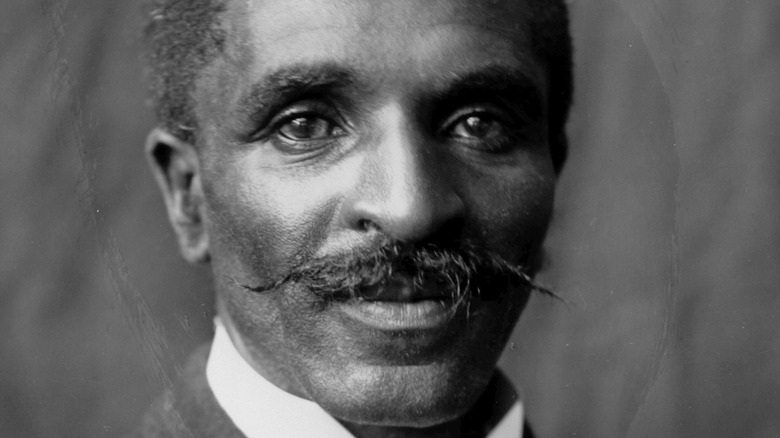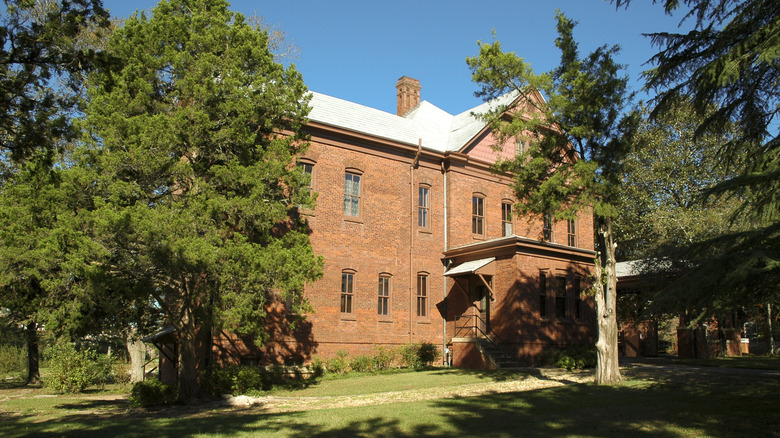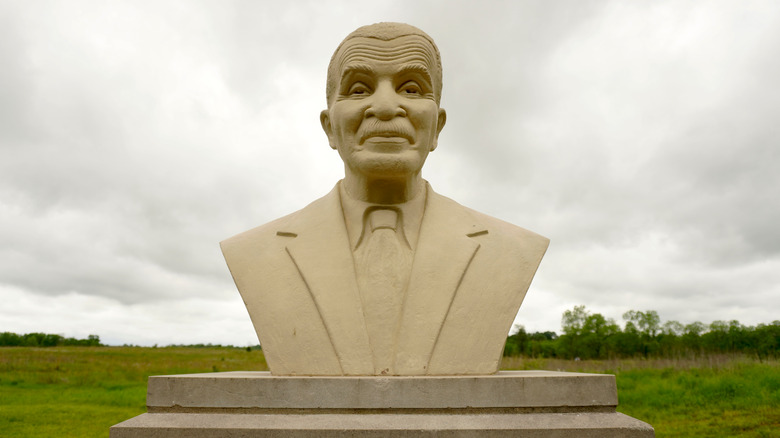The Tragic 1943 Death Of George Washington Carver
Born into slavery in Missouri toward the end of the Civil War, George Washington Carver would become a renowned scientist and inventor (via History). He spent much of his youth in Kentucky, Kansas, and elsewhere in the Midwest, educating himself on plants, soils, and pesticides in addition to receiving formal schooling. Rejected from Highland College in Kansas because he was Black, Carver briefly attended Simpson College before transferring to Iowa State Agricultural School (now Iowa State University), where he pursued botany. He was the first Black American to earn a Bachelor of Science degree, and by 1896 had a master's degree in agriculture.
Booker T. Washington of the Tuskegee Institute in Alabama quickly hired Carver to teach and research. From there Carver transformed the agricultural economy of the entire South. According to Britannica, cotton had eroded the soil throughout the region. Carver discovered this, and told farmers they needed to plant crops that could both grow in depleted soil and restore it, advocating peanuts, sweet potatoes, and soybeans. These crops enriched the soil, allowing cotton to again be planted a short time later. Carver also developed hundreds of new products from such plants, like milk, ink, flour, vinegar, molasses, soap, and dyes. Legend to the contrary, he didn't actually invent peanut butter, according to History, but he did something better: By the early 20th century, his advocacy and research had completely reversed the South's agricultural decline. When Carver died from an accident in 1943, he left behind a monumental legacy.
The passing of a giant
On January 5, 1943, George Washington Carver, at 78 years old, tripped and fell down the stairs of his home. According to the Carver Museum and Cultural Center, he was found by a maid and rushed to the hospital, where he died of anemia. He was buried next to Booker T. Washington at Tuskegee, and his headstone in part read: "He could have added fortune to his fame, but caring for neither, he found happiness and honor in being helpful to the world."
Carver, to quote his obituary in The New York Times, had "no ambition for riches ... Dr. Carver, paying no attention to his clothes and refusing to make money on his discoveries, simply devoted his life to scientific agricultural research, to enable his colored brethren to make a better living from the soil in the South." He only took out a few patents over the course of his career, leaving hundreds of innovations free to replicate, according to Biography. "Mainly I don't want any discoveries to benefit specific favored persons," Carver once said. "I think they should be available to all peoples."
Colleagues and friends mourned the passing of a brilliant, gentle man. Many of his connections were other prominent figures, as word had spread wide of his discoveries, lectures, and awards. Carver was friends with Henry Ford and Mahatma Gandhi. Thomas Edison offered him a high-salary job, and Franklin D. Roosevelt, Calvin Coolidge, and even Joseph Stalin called on him for scientific advice (via Britannica).
The scientist and the artist
Today, George Washington Carver is of course remembered first as a botanist and inventor. Many schools and parks bear his name. He is in the National Inventors Hall of Fame and has a national monument in Diamond, Missouri, his birthplace (via History). But another area of his life is starting to get more attention. "Carver's scientific achievements have dwarfed his artistic work," his 1943 obituary in the prestigious journal Nature noted, "but those who have seen his 'Three Peaches' at the Luxemburg, or his 'Yucca' at Tuskegee, are unanimous in their regret that he had not devoted more time to this department of life." This references Carver's paintings.
When Carver studied plants as a boy, he would sketch and paint them. And when he entered Simpson College, he initially was going to study art (via Forbes). Though he shifted to science, he continued to paint throughout his life. In 1941, Tuskegee had a gallery of 71 of Carver's works. One of the products Carver derived from peanuts was paint, which he later used in his pieces. His bright, realist paintings will again be on display at the California African American Museum exhibit "World Without End: The George Washington Carver Project" in 2024.
In his artistic and scientific work, Carver left much to humanity, as he'd once hoped. "Some day I will have to leave this world," Carver said in 1917. "And when that day comes, I want to feel that my life has been of some service to my fellow man" (via Biography).


